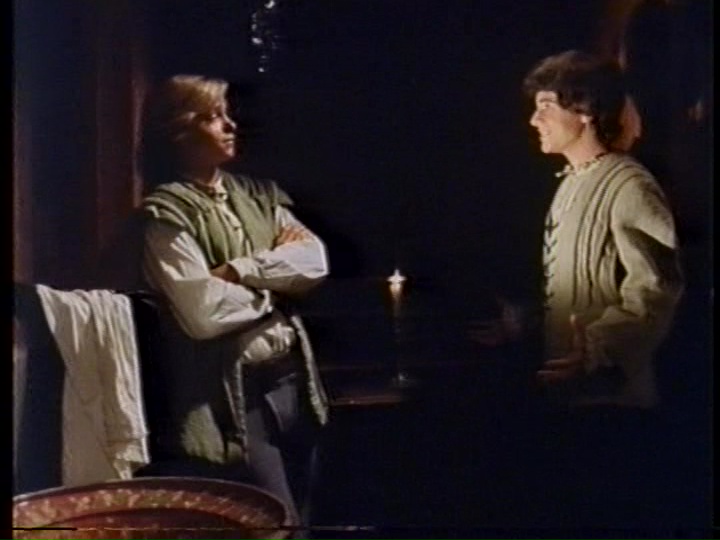Back in the 1980’s, Nebraska Public Television undertook an ambitious project of filming Mark Twain’s less famous books and stories. These were low-budget affairs, but they had the merit of remaining faithful to Twain’s texts.
Puddin’head Wilson is difficult for an audience of today to assimilate. Few modern viewers understand the social complexities of slavery in pre-Civil War America. Twain’s novel was written in 1893, and set in the period 1630–1850. It turns on a “switched babies” plot device, with a slave and a free baby living out the consequences. The laws of slavery permitted someone who was 1/32 black to be enslaved, so this is perfectly credible. Few now realize that many slaves were in this category. Twain’s bitter satire examines, in turn, all the pretensions, contradictions, and hypocrisies of a slave-holding society. Only one character, Puddin’head Wilson, comes off favourably. He is the only one who seems to care about truth, and not to be driven by greed, revenge, or pretension. Naturally, he is dismissed by all as a “pudd’nhead”, a fool. The low-budget TV film was reasonably well-crafted, and boasted a fine performance by Lise Hilbodt.
But most intriguing is The Mysterious Stranger. This bizarre story did not exist in any definitive edition until 1982. Twain worked on it for twenty years, producing three extremely different versions, all of which remained unpublished. His literary executor, Albert Bigelow Paine, issued a composite version in 1916. The film sticks closest to this version, with some elements of the others. It’s set in Renaissance Austria, where a strange youth, calling himself “No. 44, New Series 864962” appears amidst the apprentices of a printing firm. His ability to perform sundry miracles, and to travel anywhere in time and space, are revealed to one of the apprentices. The film version hints at Twain’s pessimistic world-view, which some have described as “existentialist”, though this unduly trivializes it. Twain struggled all his life to reconcile conflicting attitudes about himself and humanity, and no story of his shows it more than this one. This film version retains enough of the metaphysical spookiness and religious skepticism to ensure that it would come as something of a shock to any American public school or “family” audience that saw it. The public is used to denatured, candified film versions of Twain. Actually, it had more success in Europe, where it was filmed, than in America. The young television actor, Lance Kerwin, gave a surprisingly subtle performance as No.44, though for some reason, he was not given the star billing — probably because the character played by Canadian child star Chris Makepeace is technically the protagonist. Also, Kerwin had been was mainly a television actor, while Makepeace had scored success in film with Meatballs (1979) and My Bodyguard (1980).

0 Comments.